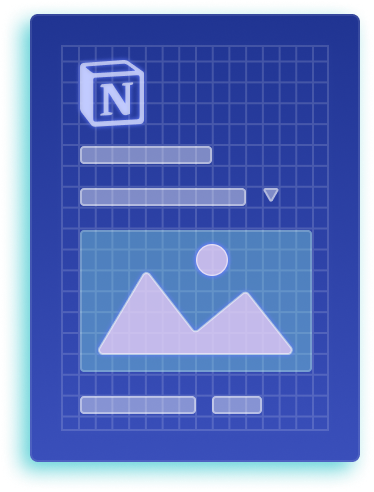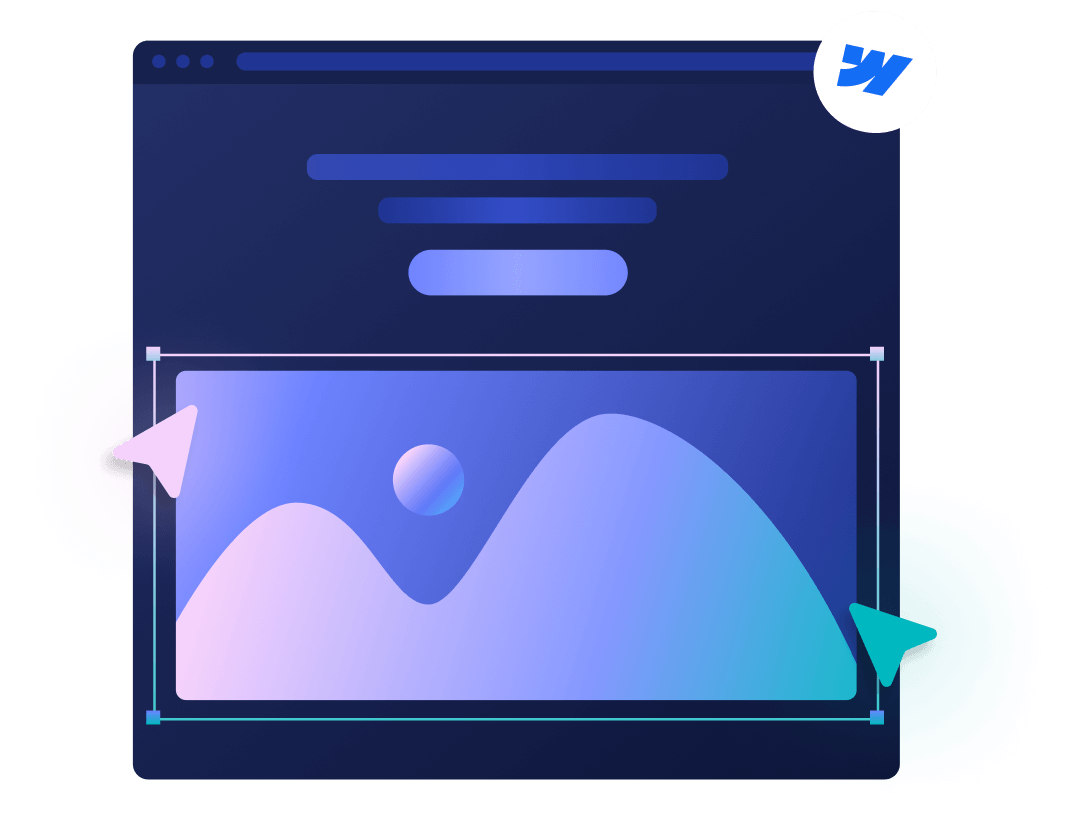
10 Best Healthcare Website Examples That Drive Success
Dr.Google will see you now. With more than 1 billion health-related questions that reach the search engine, healthcare practitioners and wellness experts whose websites are not optimized are missing out on a goldmine.
When I say “optimized,” I don’t just mean the search engines, although best SEO practices are a must. I am examining healthcare B2B platforms, content websites, and others with state-of-the-art design that facilitate smooth navigation and provide a seamless user experience. In this guide, I’ll give you a list of the ten best healthcare websites across the web.
{{cta}}
The Best Healthcare Websites, Explained by Experts
All of the healthcare website examples I’ll share here have been tested in terms of functionality, visuals, user experience (UX), and overall clout they have in the healthcare industry as a whole. Let’s check them out.
1. Nursa

Nursa.com is a prime example of a healthcare staffing platform leveraging modern web technology to deliver both functionality and discoverability. Their secret ingredient — the site was built on Webflow, thanks to Flows Ninja, an award-winning full-service Webflow agency that brought Nursa to life.
This website-building platform provided Nursa with lightning-fast load times and a responsive design across all devices, which is what all websites strive for. The content management system that Nursa has in place is designed to help users easily locate thousands of location- and role-specific job pages.
Additionally, the structure is clean and logical: users can filter nursing roles (RN, LPN, CNA) right away, followed by geographic filters that lead to dedicated landing pages. The main interactive element, that is the search option, is the centerpiece of the homepage, so users don’t have to wander around the site to get the gist of it. This setup isn’t just intuitive for users, but it’s also an SEO advantage. The more the users engage with its pages, the better the signal Nursa.com sends to Google about the quality of its content.
Each page is optimized for local search terms, which casts a wide net of entry points for organic traffic.
2. Juniper

Juniper is part of Australia’s digital health initiative, the Eucalyptus project, which focuses on weight management for women by applying various clinical programs and providing personalized digital support.
The entire Eucalyptus project is user-centric, and so are the websites that comprise it. Flow Ninja, as the main design and development partner of the project, ensured that this was the case, and MyJuniper.com is a testament to that fact.
The site's layout is intuitive from the first scroll. You get a brief explanation of the program, followed by interactive visuals like the weight slider that projects results based on starting weight, so that users can instantly relate.
CTAs are placed with precision but are far from overwhelming, ensuring a low bounce rate. What also sets the site apart is its clarity. It avoids the clutter typical of medical sites, opting for large fonts, soft colors, and clean spacing that make complex info feel accessible. The use of real-life before-and-after examples adds authenticity to the entire project, without pushing the sales narrative too hard.
3. Klara

Klara.com is another excellent example of what a healthcare SaaS site can achieve with Webflow. The site is rich in visuals, but that doesn’t slow it down one bit. One of the standout features is the call-to-action (CTA) to the embedded explainer video, positioned above the fold. It offers immediate clarity on what Klara does, helping visitors grasp the product within seconds.
Navigation is also thoughtfully handled. The sticky top menu keeps “Solutions,” “Resources,” and the patient experience quiz available through the “Assess your practice” section always within reach. Hence, users are always a click away from the most important bits of the program.
Furthermore, the layout of those pages strikes a balance between media and text, with well-placed testimonials that add credibility throughout.
4. Mayo Clinic

Mayo Clinic is one of the most trusted names in global healthcare, so it’s no wonder that its website and pages rank in top positions for most health queries. Actually, it’s the pages from their Health Library.
This is a massive and expertly curated knowledge base that serves as the site's primary engagement tool. You can find information on diseases and conditions, symptoms, tests, and procedures, among other things, and it’s placed on the main menu of the site, which helps navigation.
Speaking of the site’s design, Mayo’s is characterized by clean navigation, clear typography, and a muted color palette, so there are no visual distractions and the focus is maintained on what truly matters — health information.
5. WebMD

WebMD gives Mayo Clinic a run for its money when it comes to medical website examples. It’s a classic and unavoidable entry on any list of the best healthcare websites thanks to its content. It provides you with the ability to read about nearly any condition, check symptoms using its interactive tool, or even find a doctor.
While the sheer volume of content makes the design somewhat outdated and crowded, WebMD offers a suite of valuable tools that you won’t find elsewhere, such as a BMI Calculator, Ovulation Calculator, Cold and Flu Map, Pill Identifier, and a Drug Interaction Checker.
When you pair these features with its vast medical content, you get a top resource for everyday health questions.
6. Kin Fertility

Following Juniper, which I already featured on our list, Kin Fertility is another standout from the Eucalyptus project we’ve helped bring to life at Flow Ninja. Kin’s site is built on Webflow and serves as a masterclass in clarity and user-centered design, if I may claim so. The main navigation is simple yet effective, featuring just five top-level links: Pregnancy, Postpartum, Shop By, Blog, and About, clearly laid out without overwhelming the user. Each section drops into clean, well-structured pages with the latest products that match the user’s search intent perfectly.
Functionalities, such as the Pill Subscription flow that guides users through medical screening, consultation, and delivery with minimal clicks, are what visitors typically use to engage and interact with the website, and ultimately, convert.
7. Adonis

Adonis may not be a healthcare provider, but its role in the industry is vital. It offers an AI-powered revenue cycle management that helps medical organizations optimize billing, claims, and reimbursements.
The website, built on Webflow, showcases how complex backend healthcare services can be communicated with clarity and impact, just like they did with their website.
Their design is focused on engaging users. Above the fold is a looping video that explains the platform's value in a matter of minutes through the eyes of the platform’s founders. Navigation is cleverly structured: the “Solutions” tab unfolds into audience-specific pathways so that health service providers can browse options by team function, type of medical organization, and specialty.
CTAs are strategically placed to help steer visitors into deeper learning or straight to booking a demo, which is another reason why Adonis is one of the best healthcare website examples, especially when B2B healthcare tech is at stake.
8. NYU Langone Health

The reason why I feature NYU Langone among the top medical website examples is the balance of functionality and simplicity of its website. For instance, from the homepage, users can utilize the "Find a Doctor and Schedule an Appointment" function, which allows them to search for specialists by specialty, condition, treatment, or by name.
The homepage stays minimal, pushing users toward the well-organized top menu with clear categories like Care & Services, Conditions We Treat, and Locations. The hospital’s website enhances the authenticity of its services and adds a human touch by featuring patient stories throughout the site.
Overall, it’s a fast, accessible, and thoughtfully structured hospital website that provides patients with precisely what they need.
9. Dr. Rossinski Dental Health

So as not to leave dental health out of the conversation, I dug deep and got our hands on Dr. Rossinski Dental Health website. The website was built using a no-nonsense approach. Everything you need is immediately visible on the homepage, and the whole site is easy to navigate.
The inclusion of an Insurance page is beneficial, giving prospective patients a clear view of accepted providers before they even pick up the phone. The top menu keeps it focused, giving Appointments, Patient Forms, and Contact prime real estate on the website. As for the design aspect, the site doesn’t try to dazzle. It is there to deliver clarity and efficiency, which is often exactly what patients are looking for when choosing a dentist or any other doctor.
10. Cleveland Clinic

Another one of the healthcare website examples that deserves a spot on our list is the Cleveland Clinic. Cleveland Clinic’s website is built for utility, and it shows. Right from the homepage, patients can find a doctor, locate facilities, and get driving directions, all without digging through submenus.
The Health Library is robust and can match that of the Mayo Clinic, with a vast coverage of a wide range of conditions and treatments.
However, what stands out is the Price Estimator tool. It allows users to obtain a cost estimate for procedures and visits, a feature uncommon but incredibly helpful in healthcare websites.
How I Picked the Best Healthcare Websites
Picking the best healthcare websites is no small thing. I examined multiple aspects, including their branding, UX, and UI designs. Let’s give you a tour of the process and the features I cover.
Product Branding
Establishing a brand in the healthcare industry is a significant feat, and it stems from the trust it inspires. The trust patients or customers have in your services and the trust they place in the information displayed on your website. Juniper nails this with calming visuals, real before-and-after stories, and transparent messaging. Likewise, Mayo Clinic’s consistent tone and legacy branding position it as a go-to source for reliable medical content.
HIPAA-compliant Design
Healthcare websites in the United States must prioritize patient privacy and data protection by the Health Insurance Portability and Accountability Act (HIPAA). This includes protecting personal health information through SSL encryption, data backup and deletion, as well as other security features. I ensure that all websites on our list adhere to this practice.
Intuitive User Experience
Healthcare sites serve diverse users with distinct needs, so it’s about having a tailored UX that helps all of them find what they’re looking for without frustration. Take Adonis, for example, and how they organize the offerings by team function, specialty, and organization type. That’s how you deliver on the promise and find your spot on our list.
Website Performance and Conversions
We all want seamless browsing, especially on mobile. A website that performs well can create a positive user experience, whereas a laggy site can lead to drop-off and negatively impact conversions. Speaking of conversions, I believe that good healthcare websites must guide users toward meaningful action, whether that's booking a visit or exploring a service.
Scalable CMS
Having a scalable CMS enables you to sustainably grow your website by adding new services, FAQs, or patient education content without compromising performance. Check out Nursa’s CMS, which powers thousands of landing pages for different roles and regions, while Mayo Clinic and WebMD manage vast content libraries for global audiences. All are functioning like clockwork.
Best SEO Practices
When it comes to health, people usually search for symptoms, treatments, or providers before anything else. Ranking well in those moments is key. Therefore, SEO is crucial for both visibility and credibility. WebMD and Mayo Clinic dominate health-related search results because of their extensive blog sections.
Superb Visuals
All medical website examples presented on this page not only look good, but also reinforce and back the brand’s mission, giving it the appeal it needs to engage the audience. Take Juniper as an example. They use projected weight-loss sliders and soft tones to make their clinical offer feel personal.
{{cta}}
Conclusion
All the best healthcare sites share one commonality: they make things easier for the people who need them. Whether it’s staffing platforms, B2B tools, or hospital websites, they all require fast-loading pages, clear CTAs, and content that actually ranks — having all that is how you get known as one of the best healthcare website examples out there.
Have you got a healthcare site you want to launch or improve? We’ve helped brands like Nursa and Juniper, among others, achieve exactly that, and we can do the same for you. Book a demo with Flow Ninja and let’s create something that’s fast, functional, and built to grow.





The 2025 Playbook for Website Customer Acquisition
After helping 200+ clients skyrocket their conversions, we've created an in-depth marketing guide for turning websites into sales drivers.
.png)

.png)

in mind?
Talk with our team and learn how your ideas can become digital experiences.

.svg)














.png)
.png)

-min.png)








.svg)

.png)
.png)
.webp)
.svg)


